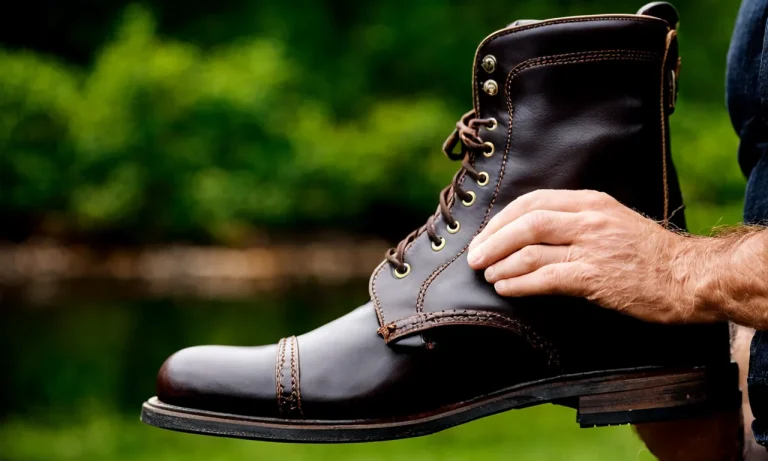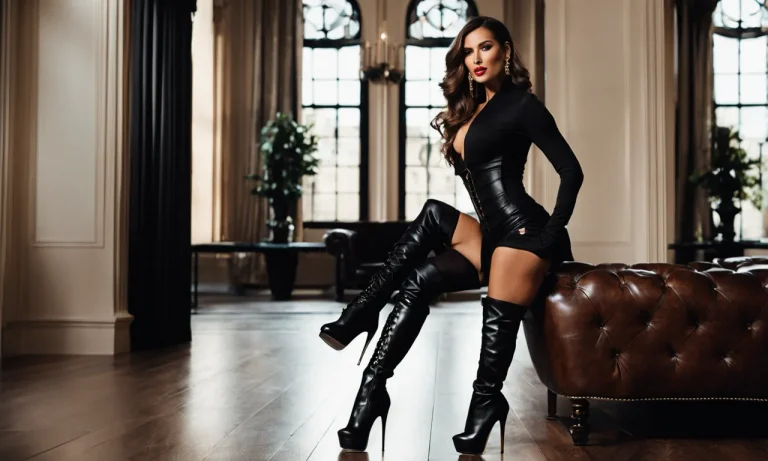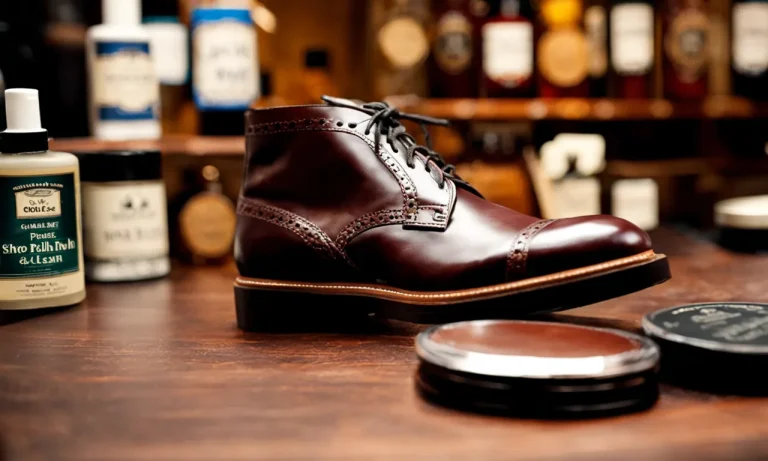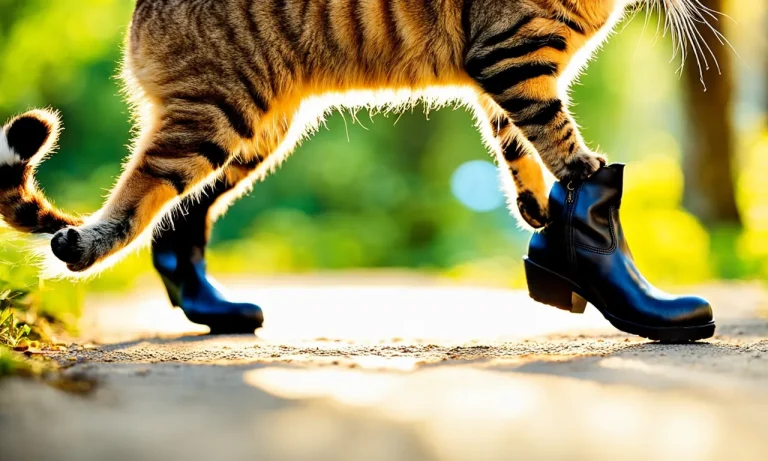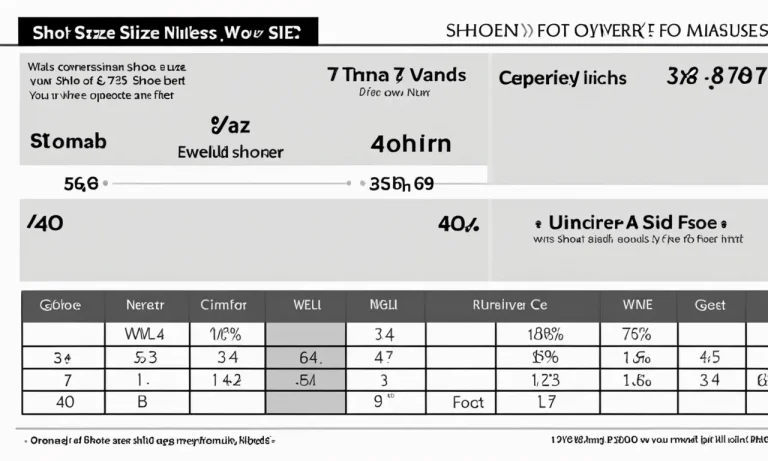Boots are an essential part of the classic cowboy style, and the bottoms of cowboy boots play a key role in both function and fashion. If you’re wondering what the different parts of boot bottoms are called and what they do, you’ve come to the right place.
If you’re short on time, here’s a quick answer: The main parts of the bottom of cowboy boots include the heel, heel base, welt, outsole, and shank. They provide structure, traction, and durability so cowboy boots can stand up to long days in the saddle.
The Main Parts of the Bottom of Cowboy Boots
When it comes to cowboy boots, the bottom of the boot is just as important as the stylish upper. Understanding the different parts of the bottom of cowboy boots can help you make an informed decision when purchasing a pair. Here are the main components:
The Heel
The heel of a cowboy boot serves both a functional and aesthetic purpose. It provides stability and support while also adding height and style to the boot. The height of the heel can vary depending on personal preference and intended use.
For example, a taller heel is often preferred by riders who need extra stability in the stirrups, while a shorter heel may be more comfortable for everyday wear. The shape of the heel can also vary, with options such as a traditional western cowboy heel or a more modern, squared-off heel.
The Heel Base
The heel base is the part of the boot that the heel is attached to. It is typically made of durable materials such as leather or rubber to provide stability and support. The size and shape of the heel base can vary depending on the style of the boot and the desired level of support.
Some cowboy boots may have a wider heel base for added stability, while others may have a narrower base for a sleeker look.
The Welt
The welt is a strip of leather that connects the upper part of the boot to the sole. It serves as a reinforcement and helps to keep the boot’s shape intact. The welt also provides additional durability and can be replaced if it becomes worn or damaged over time.
Some cowboy boots may have a stitched welt, while others may have a glued welt. Stitched welts are generally considered to be more durable and long-lasting.
The Outsole
The outsole is the part of the boot that comes into direct contact with the ground. It is typically made of a durable material such as leather or rubber to provide traction and protection. The type of outsole can vary depending on the intended use of the boot.
For example, a leather outsole may be preferred for dressier cowboy boots, while a rubber outsole may be more suitable for rugged, outdoor activities.
The Shank
The shank is a supportive piece of material that runs from the heel to the arch of the foot. It provides stability and helps to prevent the boot from collapsing under pressure. The shank is typically made of steel or a composite material, and its presence can greatly impact the comfort and support of the boot.
Some cowboy boots may have a full shank that extends the entire length of the boot, while others may have a half shank for added flexibility.
Understanding the main parts of the bottom of cowboy boots can help you find a pair that meets your style and functional needs. Whether you’re a seasoned cowboy or just looking to add a touch of western flair to your wardrobe, a well-constructed pair of cowboy boots with a sturdy bottom will surely make you feel like you’re ready to saddle up and hit the open range.
The Purposes of Each Part of the Boot Bottom
Providing Height and Structure with the Heel
The heel is a crucial component of cowboy boots, serving multiple purposes. One of its primary functions is to provide height, giving the wearer a tall and confident appearance. Additionally, the heel helps to create the distinctive silhouette that cowboy boots are known for.
The height and angle of the heel can vary, allowing individuals to choose a style that suits their preferences and needs.
The heel also plays a role in providing structure and support to the boot. It helps to maintain the shape of the boot, preventing it from collapsing or losing its form over time. This is especially important for riders who spend long hours in the saddle, as a sturdy heel can provide stability and prevent discomfort.
Creating Stability with the Heel Base and Welt
The heel base and welt are essential parts of the boot bottom that contribute to stability and durability. The heel base is the foundation upon which the heel is built, providing a solid platform for weight distribution.
It helps to distribute the wearer’s weight evenly, reducing strain on the foot and improving stability.
The welt, which is a strip of leather or synthetic material, serves as a protective barrier between the upper and lower parts of the boot. It helps to reinforce the connection between the upper and the sole, adding strength and stability to the boot.
The welt also plays a role in the resoling process, making it easier to replace the sole when it wears out.
Traction and Grip from the Outsole
The outsole is the part of the boot that comes into direct contact with the ground. It is responsible for providing traction and grip, ensuring that the wearer can walk confidently on various surfaces.
The material used for the outsole can vary, with leather, rubber, and synthetic materials being common choices.
The design of the outsole also contributes to its traction capabilities. Some cowboy boots feature a ridged or patterned outsole, which helps to improve grip on slippery surfaces. This is particularly important for individuals who work in outdoor environments or engage in activities that require a firm footing.
Supporting the Arch with the Shank
The shank is an often overlooked but critical component of the boot bottom. Located between the insole and outsole, the shank provides support to the arch of the foot. It helps to distribute weight evenly and reduces strain on the foot during walking or prolonged standing.
The shank is typically made of steel or other rigid materials, ensuring that it maintains its shape and provides adequate support. By supporting the arch, the shank helps to prevent discomfort and fatigue, making cowboy boots suitable for long hours of wear.
Types of Boot Bottoms for Different Environments
When it comes to cowboy boots, the bottom of the boot is just as important as the style and design. Different environments call for different types of boot bottoms to ensure optimal performance and comfort.
Whether you’re riding in the saddle, working on the ranch, or walking around town, there’s a boot bottom out there to suit your needs. Let’s explore some of the most common types of boot bottoms and their ideal environments.
Riding Heels for the Saddle
One of the most iconic features of cowboy boots is the riding heel. This type of boot bottom is specifically designed for horseback riding, providing a secure grip in the stirrups. The riding heel typically has a slight slant and a narrow base, allowing the foot to easily slide into and out of the stirrup while providing stability and balance.
If you’re an avid horseback rider, a boot with a riding heel is a must-have.
Walking Heels for All-Day Wear
For those who spend long hours on their feet, a walking heel is the ideal choice. This type of boot bottom features a lower heel with a wider base, providing enhanced support and comfort. Whether you’re working on the ranch, strolling around town, or attending a rodeo, a boot with a walking heel will keep you comfortable all day long.
Plus, with their stylish design, these boots are versatile enough to be worn for both work and play.
Roper Heels for Ranch Work
Ranch work often requires sturdy and durable boots that can withstand rough terrain and heavy-duty tasks. Roper heels are specifically designed for this purpose. With a low profile and a broad base, these boot bottoms provide stability and traction while allowing for easy maneuverability.
Whether you’re roping cattle, mending fences, or tending to livestock, a boot with a roper heel will help you get the job done with ease.
Cowboy Square-Toe Outsoles for the Arena
If you’re a fan of rodeos or western events, you’ve probably noticed the popularity of boots with square toes. These boots often feature a wide, flat outsole that provides stability and balance in the arena. The square toe design allows for a comfortable fit and plenty of room for the toes.
Whether you’re participating in a barrel racing competition or cheering on your favorite cowboys, a boot with a square toe outsole is a great choice for the arena.
Lug Soles for Traction in Mud and Dirt
When it comes to working in muddy or dirty conditions, having proper traction is essential. That’s where lug soles come in. These boot bottoms feature deep, rugged treads that provide excellent grip and traction on slippery surfaces.
Whether you’re working in the fields, navigating through rocky terrain, or hiking on muddy trails, boots with lug soles will keep you steady on your feet.
Leather Outsoles for Classic Style
For those who appreciate the classic look and feel of cowboy boots, leather outsoles are a popular choice. These boot bottoms are made from high-quality leather, providing a sleek and stylish appearance.
While leather outsoles may not offer the same level of traction as other types of boot bottoms, they are perfect for more casual occasions and add a touch of sophistication to any outfit.
Customization Options for One-of-a-Kind Boot Bottoms
When it comes to cowboy boots, the customization options are endless. While the upper part of the boot often gets the most attention, the bottom of the boot can be just as important. Customizing the boot bottoms allows you to add a unique touch to your boots and make them truly one-of-a-kind.
Here are some customization options to consider:
Choosing Your Heel Height and Shape
The heel height and shape of your boot can greatly affect its overall look and feel. From traditional cowboy heels to fashion-forward block heels, there are numerous options to choose from. The heel height can also impact the comfort and functionality of the boot.
For example, a higher heel may provide more arch support, while a lower heel may be more comfortable for all-day wear. Consider your personal style and comfort preferences when selecting the heel height and shape for your custom boot bottoms.
Selecting Your Outsole Material and Tread
The outsole material and tread of your boot bottom play a crucial role in determining its durability and traction. Traditional cowboy boots often feature leather outsoles, which are known for their durability and flexibility.
However, there are also synthetic materials available that offer similar qualities. Additionally, the tread pattern on the outsole can vary, ranging from traditional leather soles with minimal tread to rubber soles with enhanced grip.
Consider the types of surfaces you will be walking on and the level of traction you need when selecting your outsole material and tread.
Adding a Custom Branding Iron Mark
One unique way to customize your boot bottoms is by adding a custom branding iron mark. This involves branding a small logo or design onto the outsole of the boot. It can be a symbol that represents something meaningful to you or simply a decorative element that adds a touch of personalization.
This customization option allows you to showcase your individuality and create a truly personalized pair of cowboy boots.
When it comes to customizing the bottom of your cowboy boots, the options are limited only by your imagination. Whether you prefer a classic look or want to make a bold statement, there is a customization option out there for you.
So go ahead, let your creativity run wild and create a pair of boots that are uniquely yours!
Conclusion
From the heel to the shank, every part of a cowboy boot bottom has a purpose. Knowing the anatomy and options can help you choose the right boot bottoms for comfort, performance, and style from the ranch to the dance floor.
Your boots say a lot about you, so put your best foot forward in a well-made pair made just for you.

